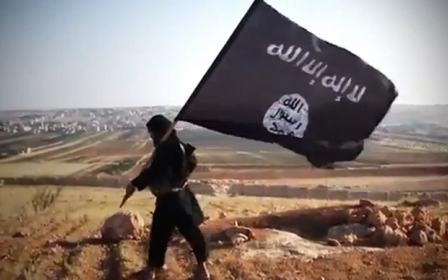The ‘known and unknown unknowns’ of oil boom and doom

Last week, the oil cartel OPEC decided against cutting petroleum production, despite global over-supply, causing the price of Brent crude oil to fall to a 4-year low of $73. For the past three years, the Organization of the Petroleum Exporting Countries has successfully maintained prices in the $100-a-barrel range - a price that member countries Saudi Arabia, Kuwait, Iran, UAE, and Qatar consider satisfactory.
But with the oil fracking boom leading to an explosion in US oil production – from 5 million barrels per day in 2011 to 8.5 million barrels in 2014 - global markets have spun out of OPEC’s control. “OPEC faces its greatest threat since the 1980s,” said OPEC secretary general Abdalla El-Badri. So what does this mean for the Middle East and US foreign policy?
The answer to that question depends largely on whom you ask. To be sure, no one really has a definitive answer given there are so many known and unknown variables, or as Donald Rumsfeld once quipped, “There are known unknowns and unknown unknowns.”
For years, $70-$80 per barrel was considered satisfactory for Middle East oil producing states. But that was before the Arab Spring happened. The region wide protests threatened the legitimacy of many OPEC member states. Popular revolt overthrew Gaddafi, and while Tunisia and Egypt are not OPEC members, the Arab Spring led to regime changes in both respective nations, too. What is often overlooked is the role rising food costs played in fueling unrest.
“The Arab spring was obviously about much more than food. But it played a role. The food-price spike was the final nail in the coffin for regimes that were failing to deliver on their side of the social contract,” says Jane Harrigan of London's School of Oriental and African Studies.
To stave off a recurrence of what had happened in Libya, Egypt, and Tunisia, for instance, the autocratic regimes in Saudi Arabia, Iran and the UAE had no choice but to dole out increased government spending, particularly in the form of food subsidies, as an effort to placate their respective citizenries.
Since the Arab Spring, Saudi Arabia, Iran, and the UAE have also built new hospitals, schools, vital infrastructure, and put more “bureaucrats” (paid jobs without roles and responsibility) on civic payrolls as a means for maintaining power and legitimacy. These governments also increased subsidies, raised public sector salaries and expanded benefits. According to Deutsch Bank report, all countries impacted by the Arab Spring have experienced ballooning fiscal deficits.
According to the International Monetary Fund, the UAE needs a price of more than $80 to meet its fiscal commitments, which is up from less than $25 a barrel in 2008. In October, the IMF assessed what oil price governments needed to balance their budgets. While Kuwait, Qatar and the United Arab Emirates needs only $70 a barrel to break even, Iran needs $136.
“Saudi Arabia, UAE and Qatar can live with relatively lower oil prices for a while, but this isn’t the case for Iran, Iraq, Nigeria, Venezuela, Algeria and Angola,” said Marie-Claire Aoun, director of the energy center at the French Institute for International Relations in Paris. “Strong demographic pressure is feeding their energy and budgetary requirements. The price of crude is paramount for their economies because they have failed to diversify.”
Others argue that cheaper oil is good news for weak Arab economies that are still struggling to recover from the Arab Spring. Jason Tuvey, Middle East economist at Capital Economics in London, estimated that “Egypt, Morocco, Tunisia, Jordan and Lebanon would enjoy a $4 billion annual reduction in their combined import bills for every $10 fall in the oil price on a sustained basis.”
Not all analysts share Tuvey’s optimism for the Middle East, however, which further underscores the unpredictability of the 2014 oil shock.
In a recent op-ed, Robert Kaplan, who is a geopolitical analyst and author of Asia's Cauldron: The South China Sea and the End of a Stable Pacific, and he asks whether the falling price of oil means an end for the Middle East. “For decades the Persian Gulf represented a primary American interest: a place that was crucial to the well-being of the American economy,” writes Kaplan. “But increasingly the Persian Gulf represents only a secondary interest to the United States: a region important to the well-being of American allies, to be sure, and to world trade and the world economic system in general, but not specifically crucial to America itself, the war to defeat the Islamic State notwithstanding. However, much oil the United States is still importing from the Persian Gulf, the fact is that America will have more energy alternatives at home and abroad in future decades.”
To be sure, the decline in the oil price “transfers wealth away from the Middle East and back to large consuming countries like the United States,” as notes Amy Myers Jaffe, executive director of energy and sustainability at the University of California, Davis. But forecasts of Middle East and OPEC demise are based on the assumption the cost of producing shale oil and gas in the United States remains sustainable. According to many energy experts, it isn’t!
“Far from leading America to a future of energy independence, the fracking boom has locked the country into a high-cost game. And despite surging oil production in North Dakota's Bakken Shale and Texas' Eagle Ford Shale, America continues to rely on OPEC oil to meet its transport needs,” writes Alexis Crowe, co-author of The US Shale Boom is Shorter Than You Think. “In fact, Saudi imports to the US have remained steady amidst the shale gale in the last few years.”
According to the International Energy Agency, “it takes approximately 2,500 wells per year to maintain production of 1 million barrels per day in North Dakota, while it requires about 60 wells per year to maintain the same level of oil production in Iraq.” Crowe says, “This is why it costs $100 to produce a barrel of oil in the Bakken basin of North Dakota and Montana, while producing the same barrel of oil in Saudi Arabia's prolific Ghawar field costs in the order of $10.”
As the leading OPEC producer, Saudi Arabia also has more than $800 billion in cash reserves to ride out a sustained period of price decline. A lower price also alleviates pressure on budgets caused by fuel subsidies, and as Crowe points out – the emerging Asian markets will continue to consume an ever-growing share of OPEC production. “While some may hopefully fantasize about Saudi Arabia’s dissolution, the quicksand of shale may sink faster than they think,” writes Crowe. “It is time for a new form of engagement that invests in private sector job creation in the Middle East - one that addresses their burgeoning youthful population - rather than a fruitless quest for energy security based solely on arms sales, democracy promotion and military deployments.”
Given the US sells $5 billion worth of arms to the Middle East, and given the US will remain dependent on OPEC for at least 20 percent of its energy needs, Crowe’s hopes for a “new form of engagement” may amount to fanciful thinking. The scarcer Middle East oil becomes, and a number analysts believe OPEC oil reserves are well passed their peak, the more aggressive the US will become, which means the inevitability of an increased US presence in the Middle East.
As it stands, the US has a total of 44 military bases, some of which are the size of small cities, in the Gulf region. The US is there to stay; the demand for OPEC produced oil is not going anywhere anytime soon; and, with the exception of Iran, OPEC members have enough built-in contingencies to ride out the storm.
“Lower oil prices might pinch these regimes, but they won’t restructure America’s relationships with its antagonists any time soon,” writes Ian Bremmer, president of Eurasia Group and a global research professor at New York University. “To truly upend the geopolitical status quo, oil prices would need to drop significantly further, or stay low for the long term. Don’t read much into the price drop just yet.”
The current oil shock promises to play out in any number of ways. These are the known unknowns. Now we wait for the unknown unknowns.
- CJ Werleman is an opinion writer for Salon, Alternet, and the author of Crucifying America, and God Hates You. Hate Him Back. Follow him on twitter: @cjwerleman
The views expressed in this article belong to the author and do not necessarily reflect the editorial policy of Middle East Eye.
Photo: Saudi Minister of Petroleum and Mineral Resources Ali Ibrahim Al-Naimi listens to aids at the King Abdulaziz International conference center on 21 February, 2011, in Riyadh (AFP)
Stay informed with MEE's newsletters
Sign up to get the latest alerts, insights and analysis, starting with Turkey Unpacked
Middle East Eye delivers independent and unrivalled coverage and analysis of the Middle East, North Africa and beyond. To learn more about republishing this content and the associated fees, please fill out this form. More about MEE can be found here.





